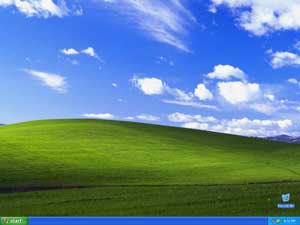
Outside Computer Links
|
|
|||
|
|
|||
|
Outside Computer Links |
|||
|
|
Windows 101: Getting Started With Windows Tips and Tricks |
 |
Windows is the GUI (graphical
user interface-you deal with pictures; you don’t type commands usually)
based on windows or boxes that can be resized, tiled, moved, and manipulated
in many ways. The beginner has to first learn to deal with the desktop and
the mouse to get around in Windows, whatever version. Also, starting to use
Windows means understanding shortcuts (icons), the Start Menu, the Task Bar,
and the Control Panel. |
|
|
| The Versatile
Mouse: Select, Open, Menu
Step one to using Windows is understanding mouse usage. Just looking at
a mouse, you can’t miss the buttons-2 or 3-the left and right buttons.
Moving the mouse around on the desktop is not hard, but to use the buttons
fully one must remember the keywords of the clicks:
|
|
|
you selected it. There are many applications, but still if
you keep the keyword in mind, select, you will avoid confusion. There are
some cases when a left click can also open. |
|
|
The usual arrow suffices for most procedures like selecting and scrolling (moving pages), opening items in Start Menu, etc. |
|
Then with any text, when the mouse pointer turns to an I-beam, you can left-click at that to insert any new letters or numbers. |
|
|
Then, frustratingly, the mouse can turn to an hourglass meaning you have to wait until something happens like waiting for an |
|
unresponsive or slowly responding program to open. |
|
|
When used to resize a Window, you get many variations of arrows. You can move a picture with a four-sided arrow. A Window or |
|
picture can be resized proportionately with a double-arrow at the corner. |
|
|
When you browse the Web (When you Open Internet Explorer and put the mouse pointer over a link to another page, it turns to a hand), |
|
the hand pointer is very handy. The arrow changes to a hand and this shows you that this text or image links to another page. When you click, you go to the page. |
|
The Desktop |
|
|
The desktop, until you add icons and shortcuts, has a lot of blank space but you immediately notice there is a bar along the bottom of the screen (the taskbar), a Start button on the taskbar and icons (small pictures) on the desktop. Each
version of Windows can have variations in the look of the desktop and,
with Windows 8 and Windows 10, you have the addition of Live Tiles. |
| On the right
side of the bottom bar, the task bar, you can see very small icons-often a
small speaker for volume and the time is shown -but there can be many
other possible small icons. This is the system tray. It’s not as important to know the name of the components of the desktop as it is to know how to use the desktop. Also, the user will soon learn that every component of the desktop can be manipulated to satisfy personal preferences. For example, one can change the background image (The wallpaper) to change to preset possible choices or to create your own background-or just to have no background. The Windows desktop is far from static and should be viewed functionally to make your work or play easier to accomplish. Once you learn how to use the desktop, you can access most programs, settings and functions of Windows. The desktop can seem intimidating until you think to yourself, “What do I want to do?” and what do I do with the desktop to accomplish my goals whether that goal is to play Solitaire (shortcut), change the date and time (Control Panel), find a less used program (Start Menu), increase the volume while listening to music (system tray), look for a particular file (Search), or look at your Documents (Documents folder),etc. |